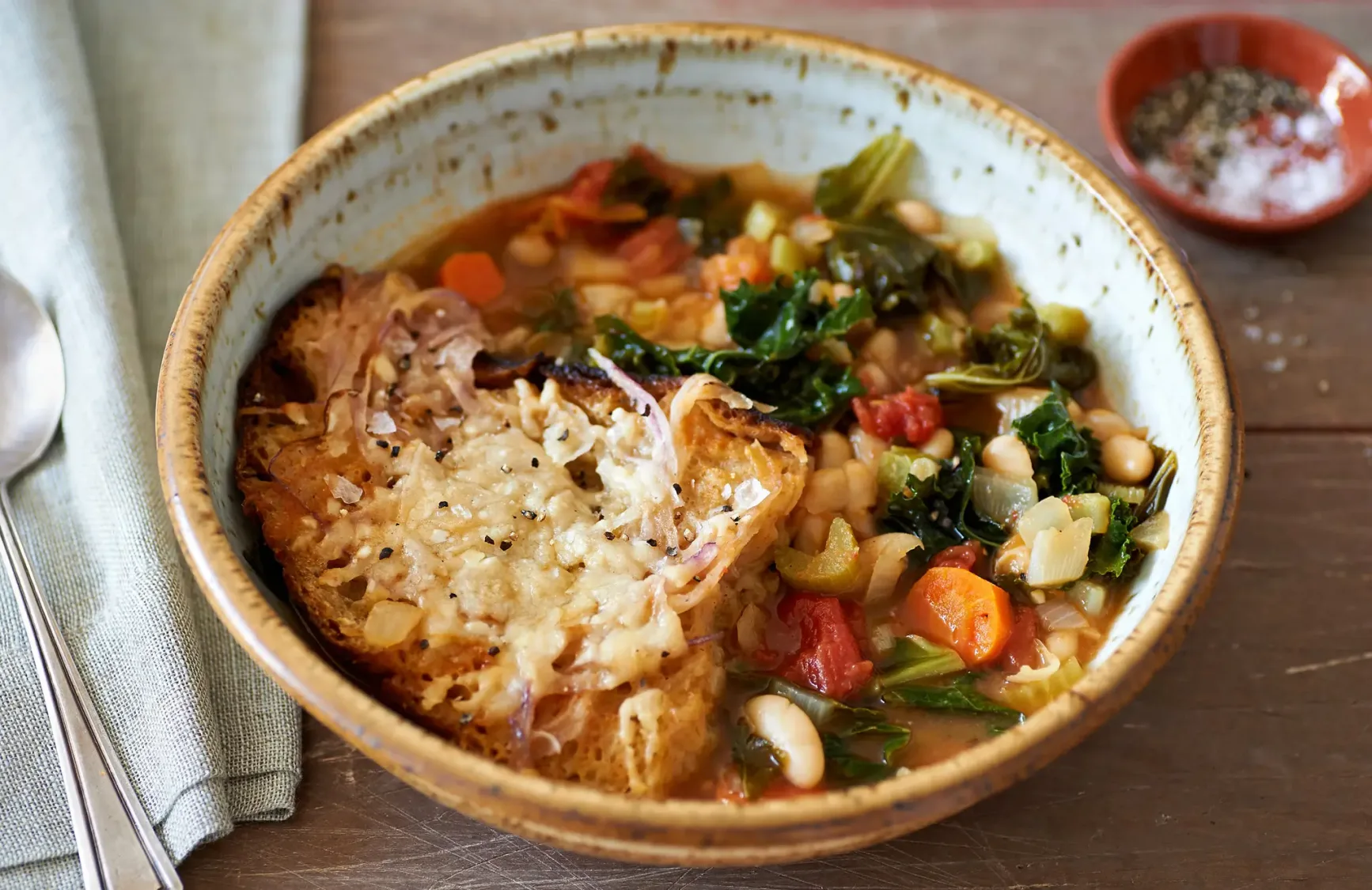
Ribollita
Hearty Tuscan soup made with bread, vegetables and beans.
Ingredients
- •Bread
- •Cannellini beans
- •Kale
- •Carrots
- •Onions
Instructions
Cook Vegetables
Saute vegetables until softened
Simmer
Add beans and bread, simmer until thickened
Ribollita is a hearty, rustic Tuscan soup that embodies the essence of Italian peasant cooking. This thick, comforting soup is made with day-old bread, cannellini beans, and an abundance of vegetables, particularly Tuscan kale (cavolo nero), making it both filling and nutritious.
The name "ribollita" means "reboiled" in Italian, referring to its humble origins in medieval times when servants would collect leftover bread and vegetables from their masters' banquets, boiling these scraps with beans to make a meal. The soup was traditionally made in large quantities and reheated over several days, with the flavors deepening each time it was reheated.
To prepare ribollita, start by sautéing a soffritto of onions, carrots, and celery until softened. Add garlic, cannellini beans, tomatoes, and various vegetables, particularly Tuscan kale. The crucial element is the addition of stale crusty bread, which breaks down and thickens the soup, giving it its distinctive texture. The soup should simmer slowly, allowing all the flavors to meld together.
While traditional ribollita follows a specific recipe, modern variations might include different seasonal vegetables or types of beans. Some cooks add pancetta for extra flavor, while others keep it vegetarian. The key is maintaining that thick, almost stew-like consistency that defines this dish.
In Tuscany, ribollita is typically served as a main course, especially during cold winter months. It's often drizzled with high-quality extra virgin olive oil just before serving, which adds richness and enhances the flavors. Some prefer to let it rest overnight, as the soup tends to taste even better the next day.
From a nutritional standpoint, ribollita is a remarkably healthy dish. It's packed with fiber from the beans and vegetables, and rich in vitamins and minerals. The combination of beans and bread provides a complete protein source, making it an excellent option for vegetarians. However, those watching their carbohydrate intake should be mindful of portion sizes due to the bread content. For gluten-sensitive individuals, the bread can be reduced or omitted, though this will change the traditional texture of the dish.
